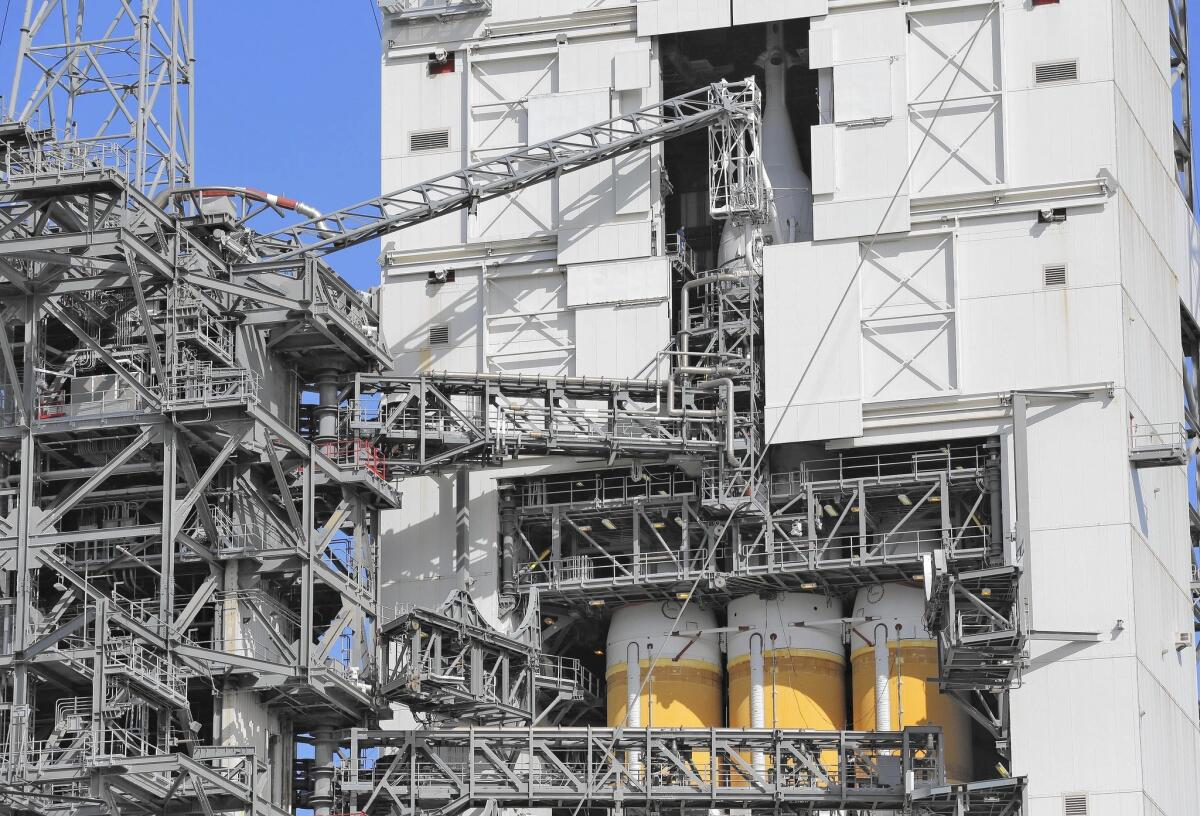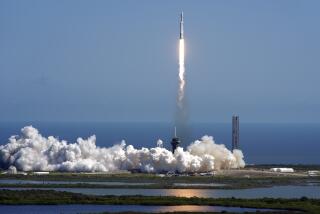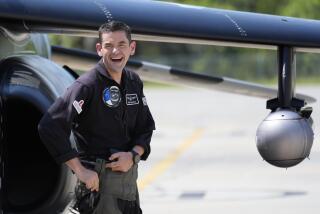NASA set to launch Orion spacecraft, paving way for human Mars visit

- Share via
NASA is preparing for the maiden launch this week of its new Orion spacecraft, which could help jump-start America’s return to human exploration of space, including a journey to Mars.
This unmanned mission is relatively simple, less than five hours long and headed to no place particularly interesting.
Yet the flight’s success and what NASA can learn from it are critical to the agency’s dreams to send astronauts deep into space.
NASA plans to launch Orion from Cape Canaveral Air Force Station on Thursday atop a Delta IV Heavy rocket. The plan is for Orion to orbit Earth twice, swinging out to a point 3,600 miles high, then splash down in the Pacific Ocean off the coast of Baja California, Mexico.
It plans a second test launch in 2018 that would send up another unoccupied Orion, this time around the moon and back.
The first manned mission, expected in 2021, probably would also go around the moon and back. Later in the 2020s, NASA intends to send Orion and astronauts to an asteroid. By the late 2030s, it wants to send them to Mars.
NASA hopes to develop annual missions for Orion in between, but is leaving those plans undetermined, for “space destinations we cannot yet imagine,” said Orion Flight Director Mike Sarafin.
That uncertainty puts the future of the program up in the air. If Orion struggles with delays, cost overruns and a lack of clear goals, as did its predecessor project, called Constellation, it could derail. In 2010, President Obama canceled Constellation, after NASA had spent $13 billion and five years on it.
The U.S. General Accounting Office estimated NASA would spend $19 billion to $22 billion on the Orion program through the first manned mission in 2021. The GAO said there was no way to estimate what would be needed beyond that.
Supporters in Congress express confidence in the space agency’s agenda. “NASA knows exactly what it wants to do with this program,” said Sen. Bill Nelson (D-Fla.), who chairs the Senate subcommittee on science and space. “This is the beginning of the trip to Mars.”
But there is congressional unease. The Republican-led House passed a budget for NASA this summer — not approved in the Senate — that insisted NASA draw up a long-range “road map” to Mars, but there is none yet, said Rep. Bill Posey (R-Fla.), a member of the House Committee on Science, Space and Technology.
Posey supports the program but cautioned that NASA must say focused to expect continued congressional support.
“Everything should be a stepping stone to get to Mars, not finding something to do until we reach the next step,” he said.
In all the missions, the Orion capsule will have a limited role: to get astronauts safely away from Earth at the beginning of a mission and back to Earth at the end.
The capsule, designed and built by Lockheed Martin Corp., is not intended to be the astronauts’ home for long trips. NASA still must design and build a deep-space habitat module for such missions.
Orion also is not designed to land on anything but Earth’s oceans. So NASA must design and build a lander, much like the one Apollo astronauts took on moon missions.
And the Delta IV Heavy rocket, designed and built by United Launch Alliance, does not figure in any of NASA’s subsequent Orion plans. The Delta is a stand-in until the agency can produce its next-generation rocket, the Space Launch System, which should be ready for the 2018 test flight.
NASA’s goals for Thursday’s mission are almost entirely about seeing how well Orion gets away from and returns to Earth.
The capsule, its astronaut-escape system and the launch-abort system will get full-launch stress. Orion’s high-tech computers will be subjected to deep-space radiation. Its new maneuvering engines will get workouts. Reentry, at 20,000 mph and 4,000 degrees Fahrenheit, will challenge new heat shield and parachute designs.
The mission, said program manager Mark Geyer, “is basically a compilation of the riskiest events we’re going to see when we fly people.”







